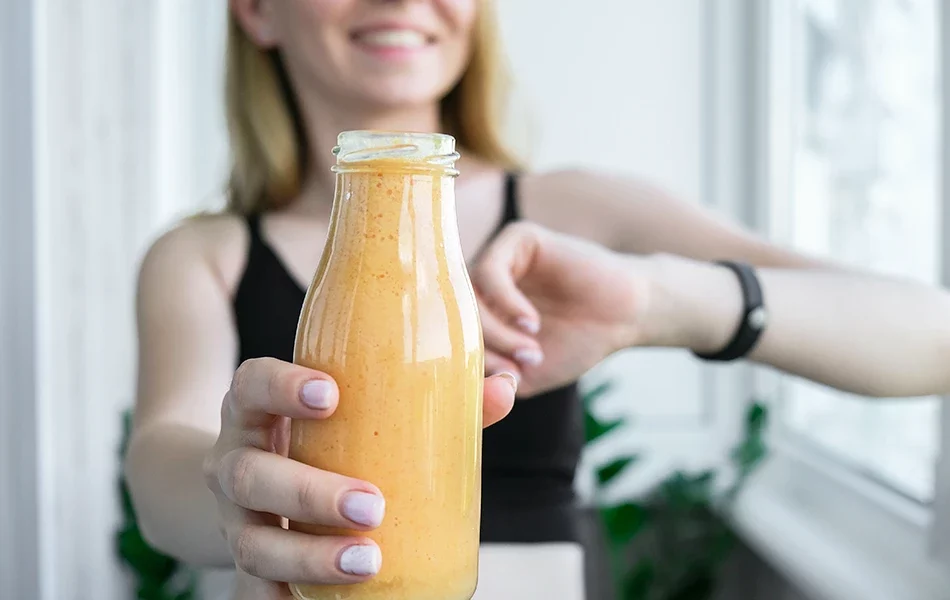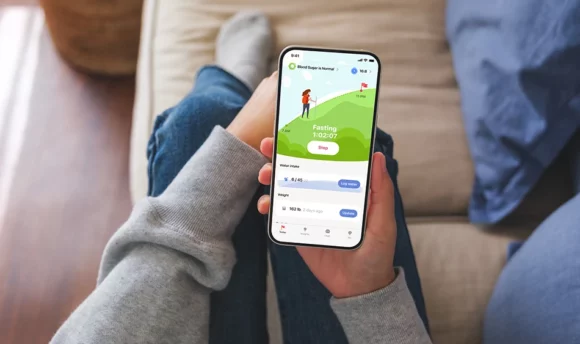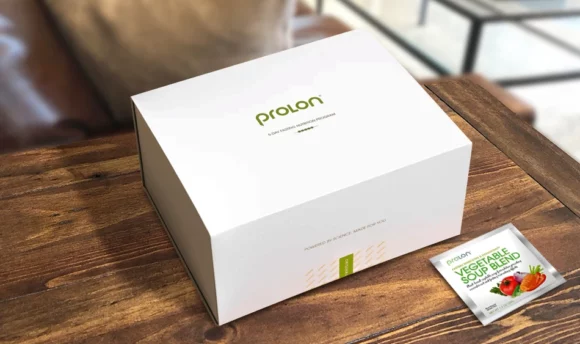Liquid Fast: What You Need to Know Before You Start
Wondering if a liquid fast might be right for you? Here’s everything you need to know about this unique diet.

In the pursuit of weight loss, detoxification, or a digestive system reset, many individuals turn to liquid fasting as a potential solution.
This style of fasting involves consuming only liquids for a specific period, usually between a few days and a few weeks, and is designed to reduce digestive stress.
And although it does offer some appealing benefits, understanding its potential risks before embarking on a liquid fasting journey can help you decide if it’s right for you. Let’s get into it.
What Is a Liquid Fast?
A liquid fast, also known as a liquid cleanse or liquid diet, is a specific type of diet in which a person consumes only liquids for a specific period of time while avoiding solid food.
Typically, liquid fasts are recommended for people pre- and post-medical procedures such as gastrointestinal, dental, or weight loss surgery. They may also be used in response to medical conditions like jaw injuries, Crohn’s, and other digestive problems when eating solid food might prove difficult.
However, recently people have also started using a liquid diet as a means to detoxify the body, enhance weight loss, and prepare themselves for intermittent or extended fasting.
The difference between a liquid fast and a clear liquid fast
Unlike a clear liquid diet – in which you can only drink see-through liquids such as clear bone broth, water, and apple juice – during a liquid fast, you have significantly fewer limitations.
During liquid fasting, you are free to drink a wider variety of liquids such as water, fruit juices, vegetable juices, smoothies, broths, and herbal teas, making it a significantly easier diet to follow.
How to Do the Liquid Fast?
If you’re considering following a liquid fasting diet, it’s important to do so under the guidance of a healthcare professional such as a doctor or registered dietitian. Here are some general steps you can expect to follow:
- Choose a fast duration: Before starting, talk with your doctor to figure out the ideal time range for your fast – typically, it’s not recommended to do a liquid fast for longer than 1–3 days without additional supplementation; however, depending on your condition and situation, you may be asked to fast for up to 2–3 weeks.
- Plan your liquids: Choose a wide variety of liquids that will provide hydration in addition to some of the vitamins and minerals that are essential to optimal body function. This can include water, fruit juices, vegetable juices, nut milk, smoothies, broths, and herbal teas. Ensure that the liquids are free of solid particles, meaning no pulp in your juices or pieces of meat in your broth.
- Set a timer: While following a liquid diet, it’s recommended that you eat more often than the usual three meals a day. This will not only help you stay satiated but also provide your body with adequate fuel throughout the day.
- Consider your nutrients: Although a liquid diet can provide a much-needed break to the digestive system, it’s important to remember that this style of dieting generally lacks certain essential nutrients. Getting between 1,350–1,500 calories and 45 grams of protein per day and drinking a variety of nutrient-rich beverages are essential to safely complete your liquid diet.
- Replenish your electrolyte levels: Electrolytes are used to describe a wide array of elements, including potassium, sodium, magnesium, and calcium – all of which play an important role in balancing your fluid levels and maintaining optimum nerve and muscle function. Because over-drinking can cause your electrolyte levels to plummet, it’s important that you use supplements or drink electrolyte-rich drinks to maintain optimal levels.
- Plan your transition out: After completing the liquid fast, it’s important to reintroduce solid foods gradually. You may be craving a hamburger, but you should instead start with easily digestible foods like soups, cooked vegetables, and soft fruits to avoid shocking your digestion.
Remember, a liquid diet may not be suitable for everyone. These are general guidelines that may not be suitable for your particular needs.
To ensure your safety while liquid fasting, consult with a healthcare professional who can provide you with personalized advice throughout the fasting process.
What Food Is Allowed on a Liquid Fast?
The following chart will give you a better idea of the foods that a liquid diet consists of.
Be sure to consume a variety of foods during your liquid fast, including vegetable and fruit juices, milk or plant-based milk, yogurt, and other liquid nutritional supplements to avoid potential nutrient deficiencies.
What’s allowed
- Fruit and vegetable juice (no pulp)
- Broth
- Coffee, tea
- Soft drinks
- Sports drinks
- Milk or plant-based milk
- Milkshakes
- Ice pops and ice cream
- Smoothies
- Clear or creamed soups
- Honey
- Pudding or custard
- Liquid dietary supplements
- Yogurt (without any toppings)
- Powdered protein, dry milk, and other nutritional supplements
What you should avoid
- Meat (unless puréed into liquid and strained)
- Solid cheese
- Tofu, meat substitutes
- Nuts and seeds
- Raw fruits and vegetables
- Mashed food (e.g., potatoes)
- Soups or stews with noodles, meat, or vegetables
- Cereals
- Bread
- Whole pasta or rice
- Sweets like muffins, pastries, cookies, hard or chewy candy
- Applesauce
- Potato chips, pretzels, popcorn
- All other solid foods, unless directed otherwise by your doctor
Potential Benefits of a Liquid Fast
Although there are many people touting the benefits of a liquid-only diet, especially for weight loss, it’s important you’re made aware of the fact that there is limited research to back their claims.
Most of the potential benefits of this diet are similar to what you would expect to glean from traditional intermittent fasting since they are both restrictive diets that aim to keep you in a calorie deficit.
That being said, if you’re ready to stick to only liquid meals for a few days, here are some of the potential benefits of doing so:
#1 Easy on the digestive tract
An undeniable benefit of the liquid diet is the impact it can have on reducing stress on the digestive system.
Since liquids are processed by the body significantly faster than solid foods, which can take up to 36 hours to work their entire way through your digestive tract, the liquid diet can give your body a much-needed break.
During this time, your energy can be used to focus on reparation elsewhere in the body.
#2 May help with weight loss
Contrary to what you may think, calorie-restrictive diets such as intermittent fasting and liquid diets do not slow the metabolism.
Instead, they play an important role in boosting the metabolism, with studies showing that they can increase the amount of calories you burn, even without regular exercise.
These effects are likely a result of consuming fewer calories per day, which is made easier while eating only liquid foods since they can help to curb your hunger as soon as 15 minutes post-consumption.
#3 May improve cardiovascular health
Similarly to intermittent fasting, which helps to lower blood pressure through a lowering of LDL or “bad” cholesterol levels, there is research that points to the potential benefits that cutting out solid foods can have on preventing cardiovascular disease.
Although low electrolyte levels can cause arrhythmia and cardiac arrest, monitoring these levels alongside a healthcare practitioner is essential to safely follow a liquid diet.
Risks and Considerations
Before starting a liquid diet, here are a few things to consider:
#1 May result in nutrient deficiencies
As mentioned above, one of the biggest issues with following liquid diets, especially for longer periods of time, relates to how easy it is to become nutrient deficient.
This can happen as a result of a lack of food variety if you are not drinking well-rounded liquid meals that contain protein and nutrient-rich foods like fruits and vegetables.
Naturally, it is also difficult to get enough fiber and eat foods high in omega-3 fatty acids, both of which are important for curbing hunger and regulating blood sugar.
#2 Not Sustainable
If you are following a liquid diet for weight loss purposes, it’s possible that you will lose a few pounds while fasting but gain it back only a few days later.
This style of dieting, due to its restrictive nature, is not only difficult to stick to but not safe to do for extended periods.
#3 May cause digestive issues
Though a liquid diet can put less strain on the digestive system than a normal diet, the lack of nutrients and fiber can disrupt your digestive tract, causing constipation and bloating, especially in people who struggle with irritable bowel syndrome (IBS).
#4 Not suitable for people with certain conditions
While a liquid diet can be appropriate for some people, there are certain groups who should carefully consider whether it is suitable for them. These include:
- Pregnant or breastfeeding women
- Anyone with pre-existing conditions such as diabetes, kidney or liver disease, Crohn’s disease, or other gastrointestinal disorders
- Anyone under 18 years old
- People with a history of eating disorders
- Underweight people or anyone suffering from nutrient deficiencies
Whether or not you fall onto this list, check with a healthcare professional before beginning a liquid diet.
A Word From a Nutritionist
If your current way of eating isn’t working for you, then it’s not a bad idea to switch it up. After all, food is supposed to fuel your body, and if you feel as though your current diet is leaving you feeling lethargic or bloated, it could be time for a change.
That being said, doing a liquid fast is on the extreme side of dieting. In most cases, it should be done only under doctor’s orders before or after medical procedures or for a day or two to give the gut a break. Liquid fasting isn’t the best option for providing lasting changes.
Instead, you may choose to adopt intermittent fasting, which is clinically proven to provide many of the same benefits that liquid fasting does in theory. An easy place to start is with the 14:10 or 16:8 method, which restricts your eating to only a small part of the day.
If you do decide to take on a liquid fast, it’s essential that you do so properly, completely avoiding any pieces of solid foods and pre-planning your liquid meals to ensure that your diet includes the proper amount of protein and nutrients.
FAQs
A liquid diet can offer some health benefits, such as helping weight loss, improving cardiovascular health, and reducing strain on the digestive system, but because of its restrictive nature should only be done short term.
Yes, a liquid diet can help you lose weight mostly through calorie restriction and improved digestive function, including enhanced nutrient absorption.
Generally, doctors will recommend that you follow a liquid diet for no longer than 3 days while recovering from surgery or a medical condition, though this time can extend up to a span of a few weeks.
The Bottom Line
A liquid diet is unlike a clear liquid diet in that you can consume a wide variety of foods, like frozen yogurt, fruit and vegetable juices, and nut milk.
Having the option to eat a wider variety of foods prevents possible nutrient deficiencies, though it’s still a common issue for anyone choosing to follow a liquid diet.
For this reason, this style of eating is designed to only last for a few days and is usually recommended to give your gut a break after medical procedures, such as oral surgery or digestive conditions, and shouldn’t be viewed as a long-term solution for weight loss.
If you are considering doing a liquid fast, it’s important to consult with a doctor or registered dietitian before getting started.

















































 Select your language:
Select your language: 








